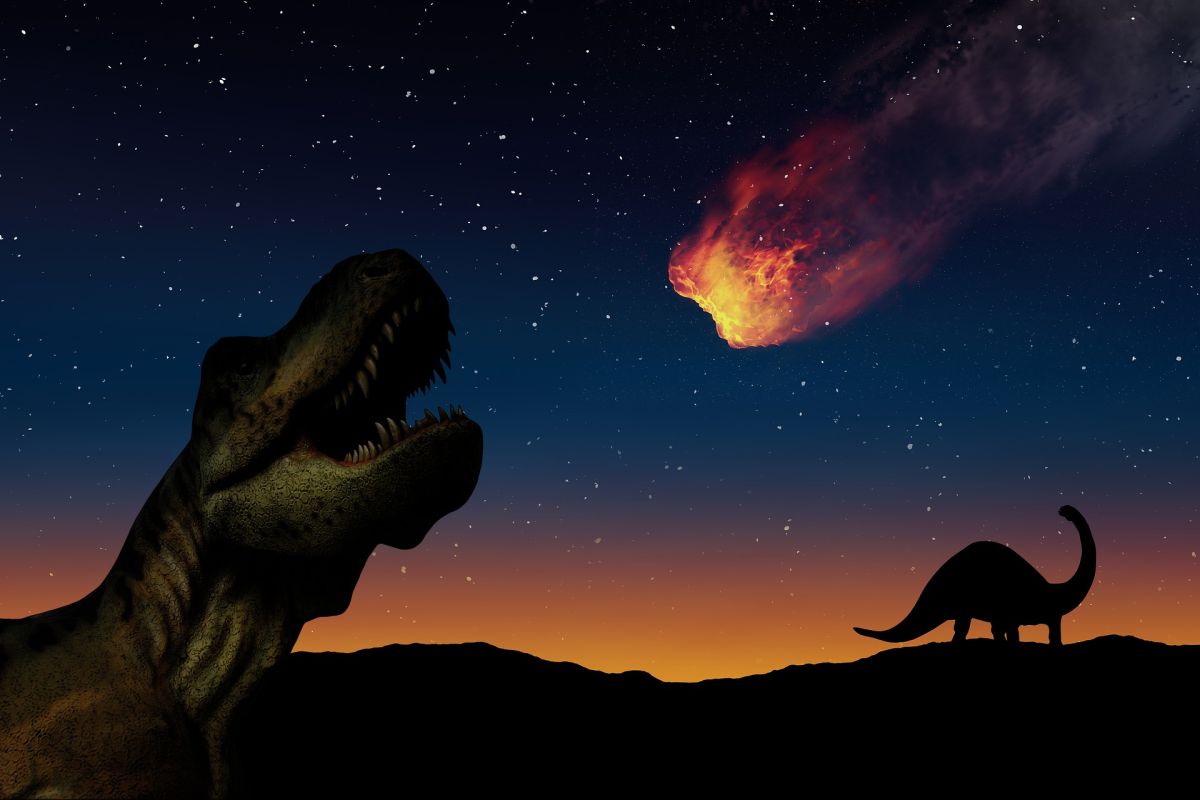Researchers, led by paleontologist Robert DePalma, excavated at the Tanis site in North Dakota and unearthed a huge trove of fish fossils that were likely destroyed by the asteroid impact that made the dinosaurs extinct long ago 66 millions of years.
DePalma, postdoctoral researcher at the University of Manchester, now claims to have found a fragment of this “apocalypse” encased in a piece of amber, nature’s time capsule.
A dinosaur graveyard
The asteroid that hit Earth off the coast of Mexico’s Yucatan Peninsula was simply devastating for all life on the planet, not just the dinosaurs. The cosmic impact unleashed the force of one billion atomic bombs on Hiroshima and released gigatons of sulfur and carbon dioxide, which could have lowered surface air temperatures by 47 Fahrenheit degrees.
This global winter lasted for years, long enough to devastate plant life and everything else along the food chain. About 75% of all animal and plant species went extinct, including the iconic dinosaurs (except the birds).
In 2019, DePalma and his colleagues discovered that a huge surge of water must have hit Tanis as a result of a major earthquake triggered by the asteroid impact, rapidly depositing sediment that covered all manner of animal remains, including fish, a turtle impaled on a stick, and a leg that may have belonged to a dismembered dinosaur that witnessed the asteroid impact in real time.
Today’s endless dusty plains at the Tanis site looked radically different during the Cretaceous Period , during those ominous days just before the asteroid impact. Back then, the entire Midwest was largely a swampy rainforest, with a huge inland sea called the Western Interior Seaway that stretched from the Gulf of Mexico to Canada.
This region was probably full of life until the cosmic impact changed everything. But the dinosaurs and other animals did not die as a result of the direct impact, which occurred more than 2,000 miles away.
Instead, most in this area were likely wiped out by massive sediment debris displacement as a result of movement of water bodies from the interior seaway.
These water waves were not technically tsunamis, which develop more slowly after an earthquake, but rather the more instantaneous variety called seiches.
DePalma used the various seemingly unrelated pieces of evidence found at the site to piece together the final days of the creatures that left. He is certain that the large number of animals that appear to have been killed at the same time did not die as a result of massive wildfires or the nuclear winter that would ensue in the coming months.
These would have been killed by small fragments of molten rock from the impact crater thrown into the atmosphere, where they quickly crystallize into a material similar to glass. Some of this material, which is preserved as clay due to the infiltration of water over millions of years, was found lodged in the gills of the fish.
But some of these spherules also landed in tree resin, some of which were preserved in amber.
“In that amber we have located a series of spheres that were basically frozen in time, because like an insect in amber that is perfectly preserved, when these spheres entered the amber, the water could not reach they. They never turned to clay and are perfectly preserved,” DePalma told CNN.
Also read:
· Photo: Dinosaur fossil discovered ‘linked to asteroid impact’ that extinguished them
· Crocodile attacks a tourist in the Bacalar lagoon in Quintana Roo
· New evidence reveals when the asteroid that killed the dinosaurs
